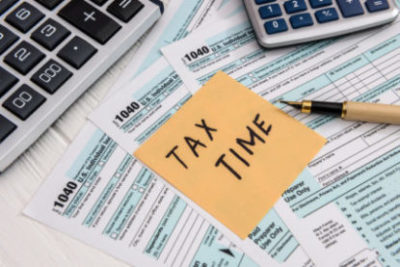 It’s tax season again. As part of Stewardship Capital’s continued focus on giving back to the community, I recently became a certified tax preparer through the Volunteer Income Tax Assistance Program. In cooperation with the Community Services League, I volunteer to provide free tax preparation services to low-income and elderly members of our community on Thursday nights.
It’s tax season again. As part of Stewardship Capital’s continued focus on giving back to the community, I recently became a certified tax preparer through the Volunteer Income Tax Assistance Program. In cooperation with the Community Services League, I volunteer to provide free tax preparation services to low-income and elderly members of our community on Thursday nights.
One of the things that stood out from my training was just how much of an impact the Tax Cuts and Jobs Act of 2017 has had on individual tax returns. The biggest shift is the increase in the number of people who no longer need to itemize their taxes.
After the law was passed, the standard deduction nearly doubled from $12,700 to $24,000 for married couples, and from $6,350 to $12,000 for single filers. According to a recent study by the University of Minnesota the average household income in Missouri is $86,397.22. Therefore, in order for the average family to see an advantage from itemizing their taxes they need almost 30% of their gross income to be spent on deductible expenses, which generally speaking, is uncommon.
As a result, this change has also required taxpayers to develop new strategies for reducing overall tax liabilities. Finding ways to reduce taxable income is now the best way for most individuals to reduce the taxes they will pay.
The simplest way to lower your taxable income is through the contribution of pretax dollars to things like health savings accounts, and qualified retirement accounts. If your employer makes available to you a high-deductible health insurance plan, individuals have the ability to contribute up to $3,500 to an HSA account and substantially more if they have a family plan or are over the age of 55.
Retirement savings accounts are also a great way for working individuals to lower their taxable income. Any working person can contribute between $6,000 and $7,000 into individual IRAs, and up to $19,500 in a 401(k). All combined, the average person in this country has a huge opportunity to claim very little in taxable income.
A quick calculation for myself shows that if my wife and I were to maximize our contributions to these common tax shelters and took the standard deduction we could reduce our taxable income by as much as $82,000! Add to that number the $2,000 tax credit for each of our two children, and you can see how a good tax plan can pay off.
The opportunity for even more money to be saved free of federal taxation is a real possibility in 2020. President Trump has expressed an interest in passing legislation that establishes Universal Savings Accounts prior to the November election. Unlike the other accounts previously listed, these accounts if invested, could be used as non-retirement savings accounts free of federal tax.
If you’re reading this and are disappointed that it’s too late to put any of these tax saving strategies in place for 2019, you’re wrong. HSAs, IRAs and in rare cases 401(k) contributions are all permitted to be applied to the previous year up until April 15. For more information about these options contact a tax professional or financial planner in your area.
